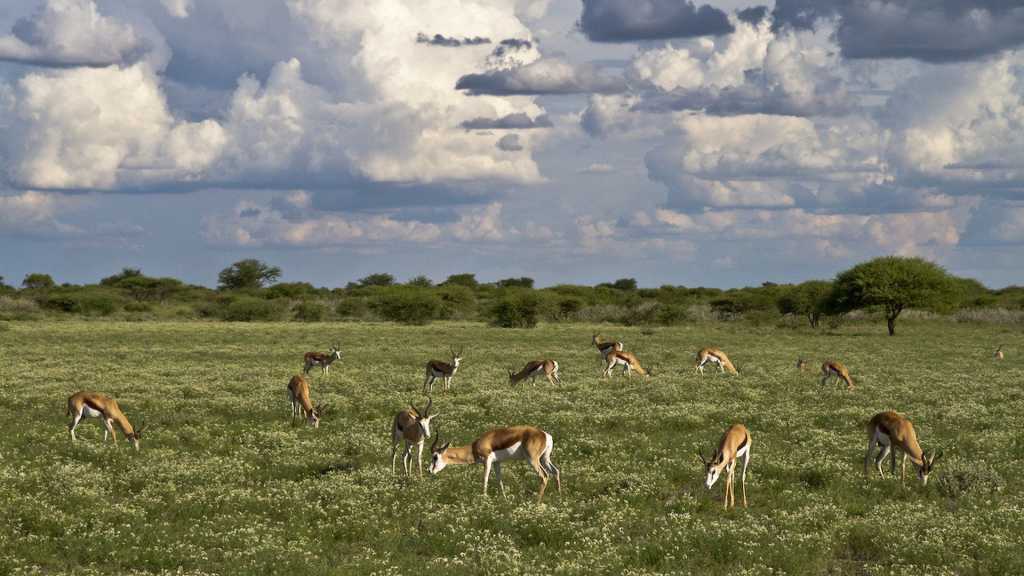- The Kalahari will be hardly visited at one time: obviously, distances are very large and logistics of such a journey is quite heavy... some will choose to devote itself to only part of the "Great Kalahari" and we take great care preparing its journey to these arid lands.
- Gantsi and the Central Kalahari Game Reserve are easily accessible from Maun so you can finish or start your trip to Botswana by a two-day foray into the Kalahari.
- The visit of the Kgalagadi Transfrontier Park can be easy from South Africa by going to Namibia and also in a "Kalahari" trip which would cover this unique ecosystem on the 3 southern countries...
Botswana, the Greatest Wildlife
Botswana's National Parks are, without doubt, the wildest in Africa. Tourism is intentionally limited to preserve pristine nature. If you can afford authentic Africa, head for Botswana, one of the last wild sanctuaries on the continent, distinguished by an abundance of exceptionally rich wildlife. A trip to Botswana almost inevitably involves a visit to Victoria Falls in Zimbabwean territory due to their strategic position: take a step at the end of your safari, their grandiose appearance will amaze you.
When to go?
The dry season lasts from April to October to the south and November to the north where, however, the rain totals are higher. The southern part of the country is most exposed to cold winds during the winter period (early May to late August) when the average temperature is about 14 ° C (57.2 ° F). The whole country has hot summers with average temperatures around 26 ° C (78.8 ° F). Temperatures are high throughout the year although winter is the sunniest period. The whole country is windy and dusty during the dry season.
Formalities
The visa is not compulsory for French nationals. The passport must be valid for at least six months after entry into Botswana. The permitted length of stay is in the sole discretion of the Immigration officer, it is recommended to check the date on the stamp when entering the country.
Anyone traveling to Botswana with a minor child must be able to provide a complete and certified copy of the child's birth certificate or a plurilingual birth certificate in addition to his or her valid passport. If the child is traveling with only one of his parents, he will have to present a travel authorization signed by the absent parent.
Health
No vaccination is mandatory but some vaccinations are recommended; Yellow fever vaccination is mandatory for all travellers from a country where endemic yellow fever is present but may be advised to all travellers.
Antimalarial treatment is recommended (see your doctor).
Currency
The Pula (which in Tswana means "rain") is the official currency of Botswana.
Major credit cards are accepted in most of lodges but it is imperative to possess US dollars in sufficient quantity to regulate the extras (drinks, tips...)
